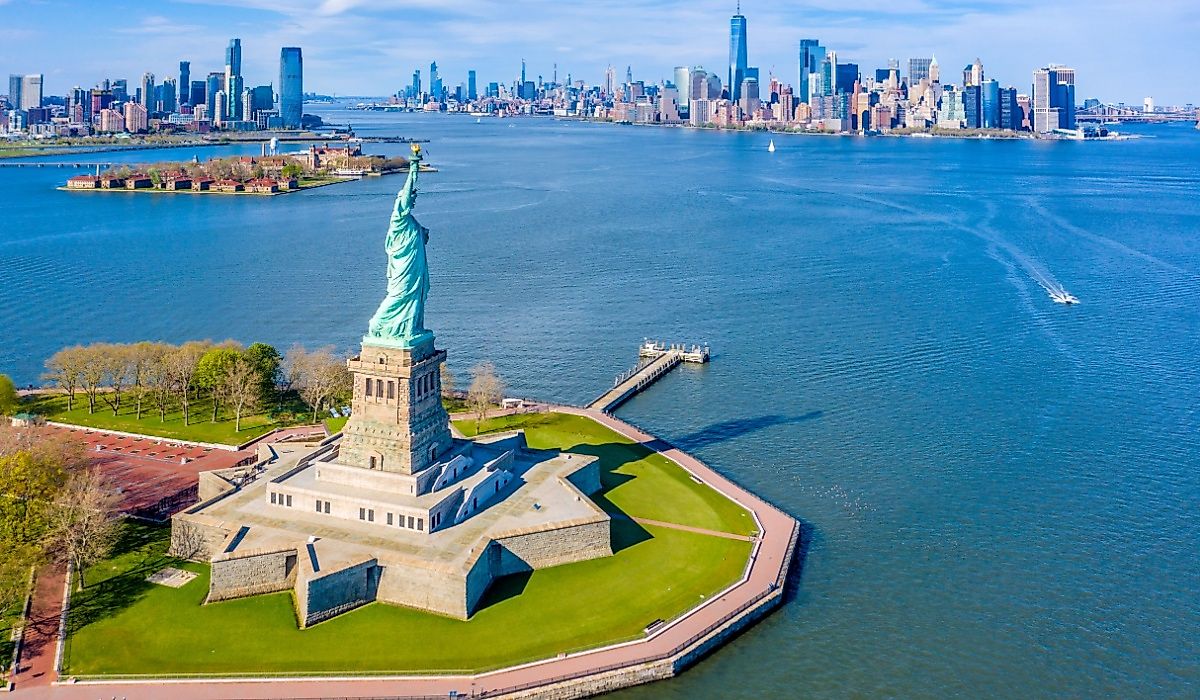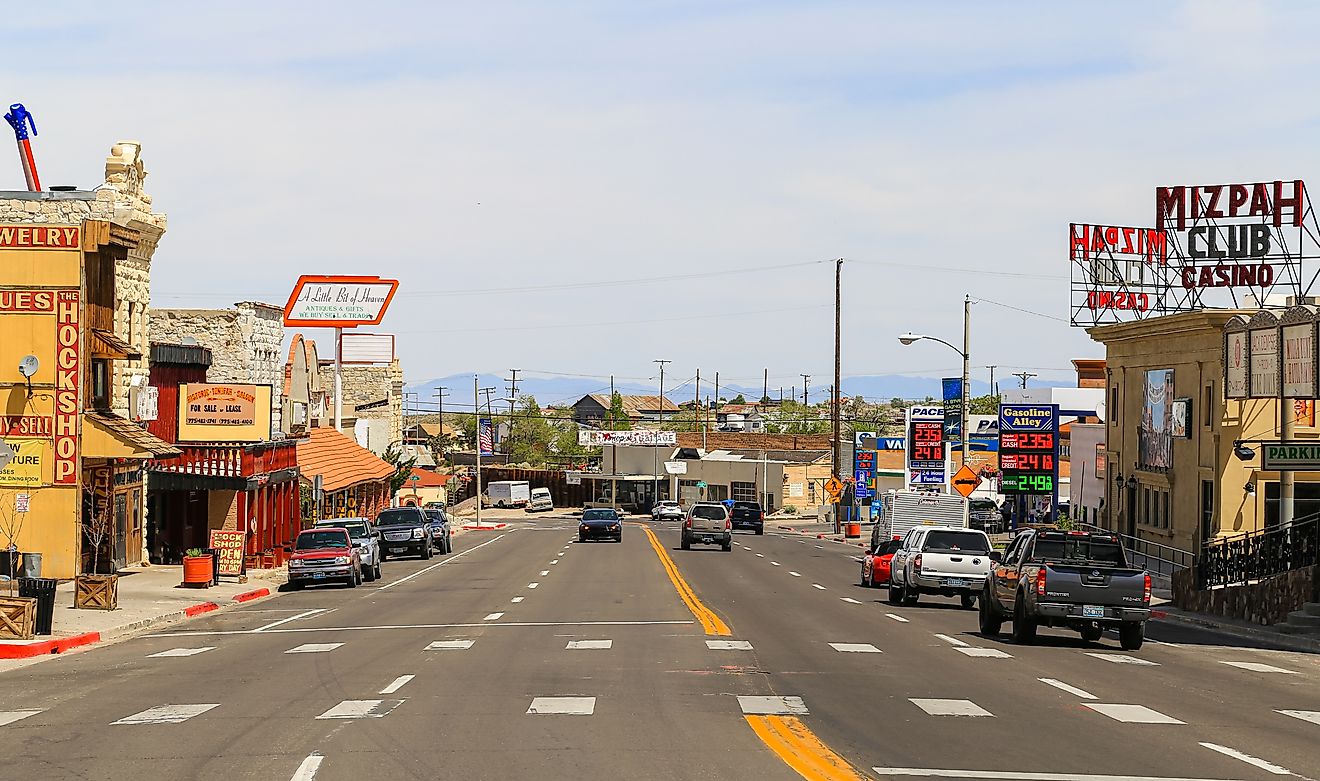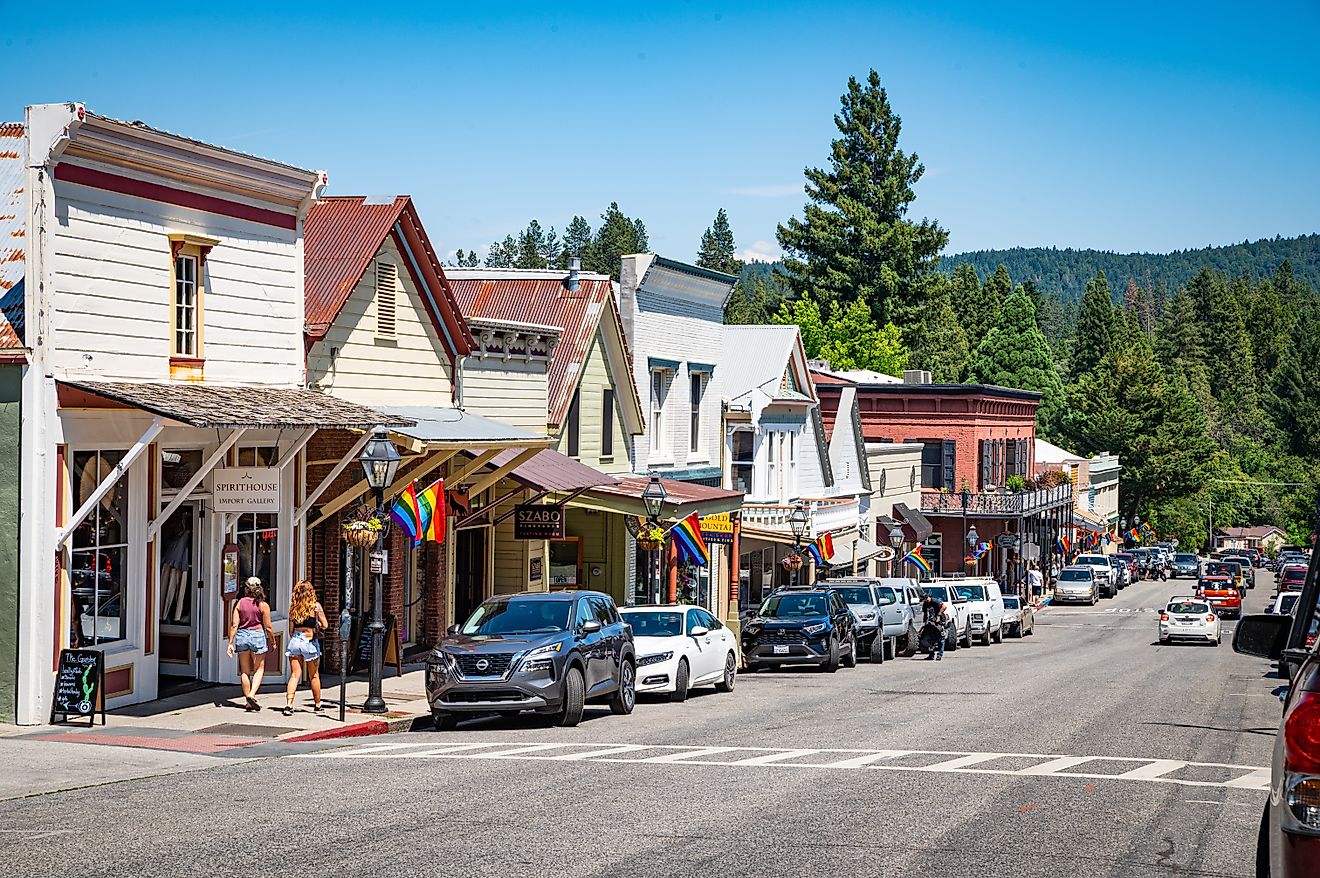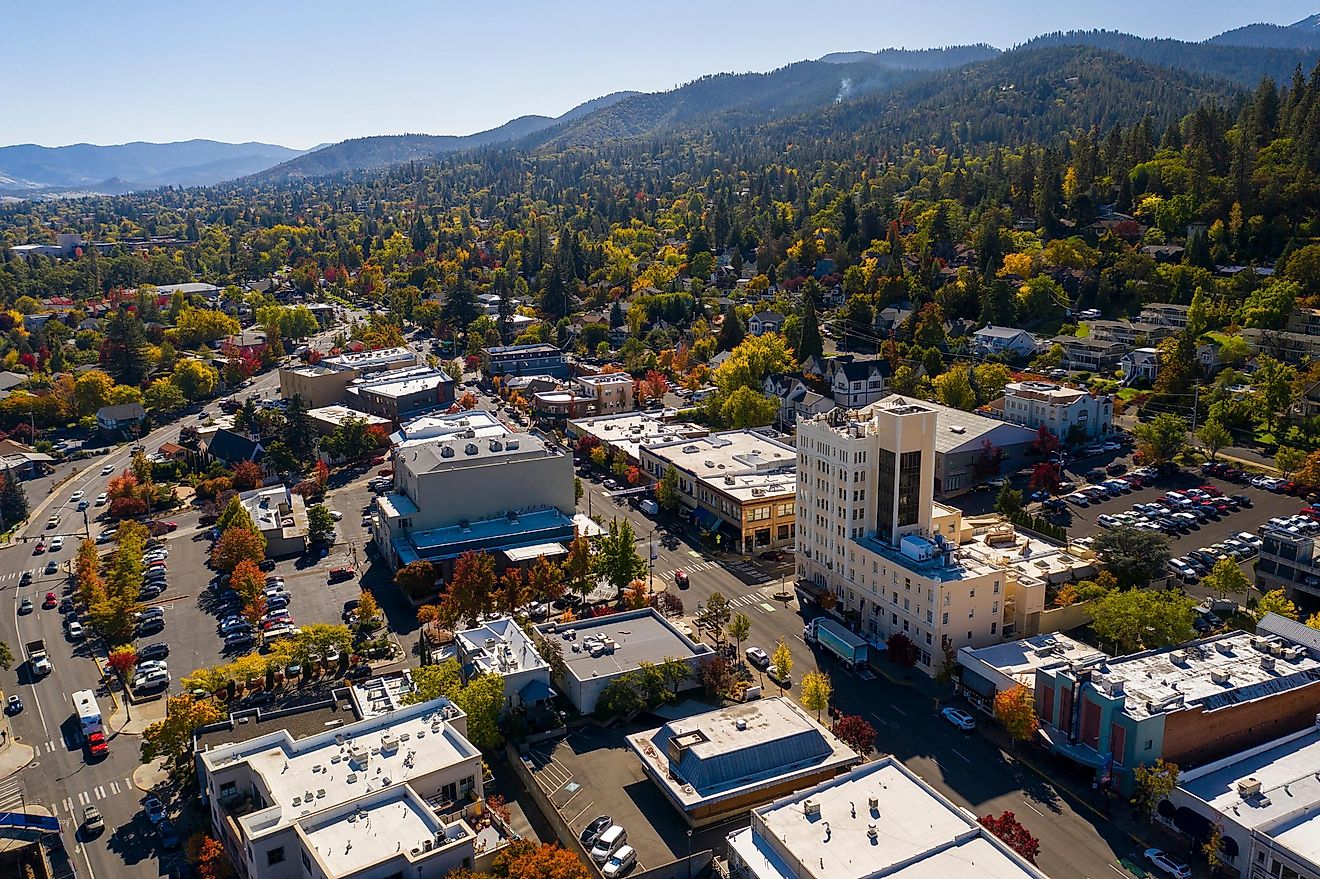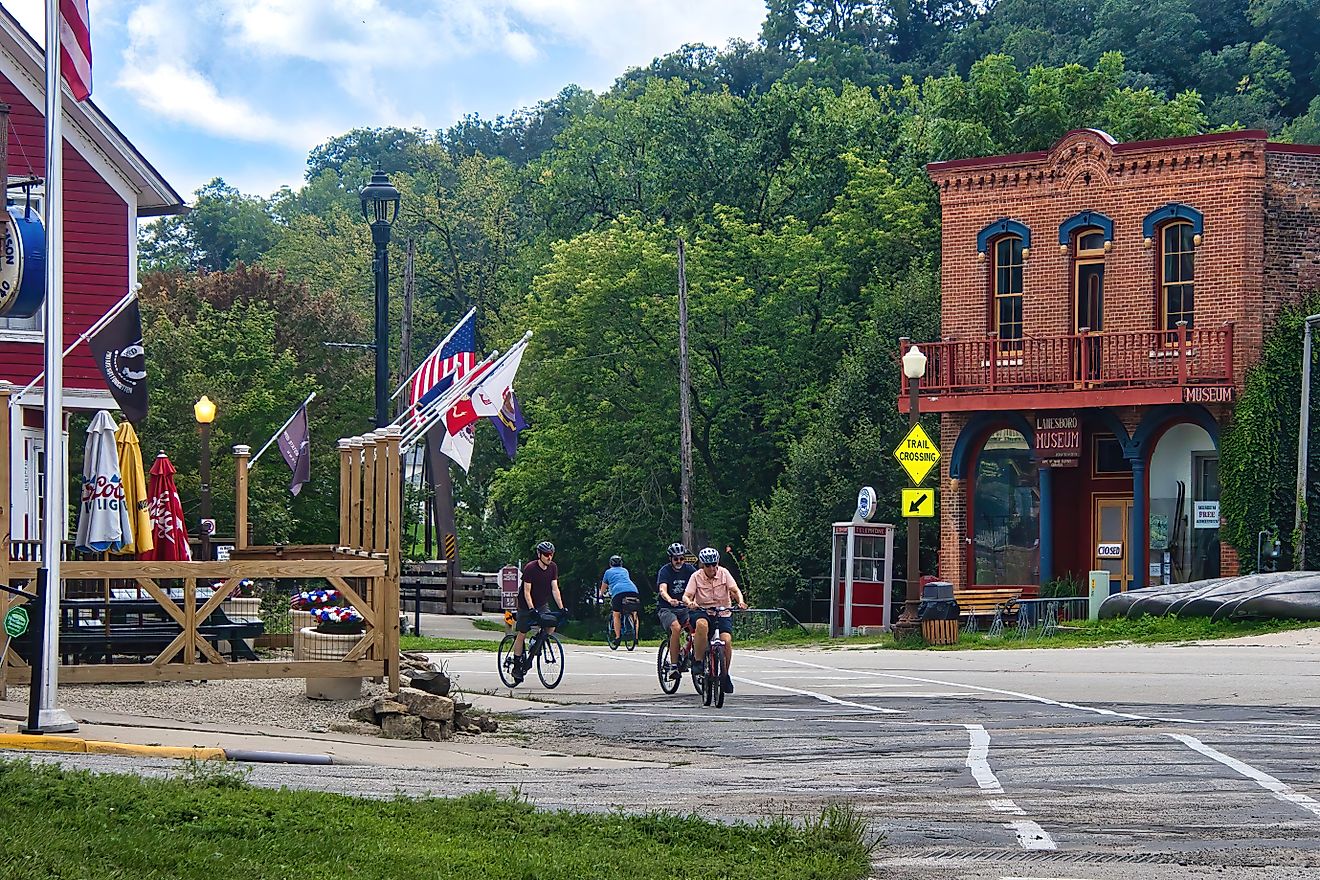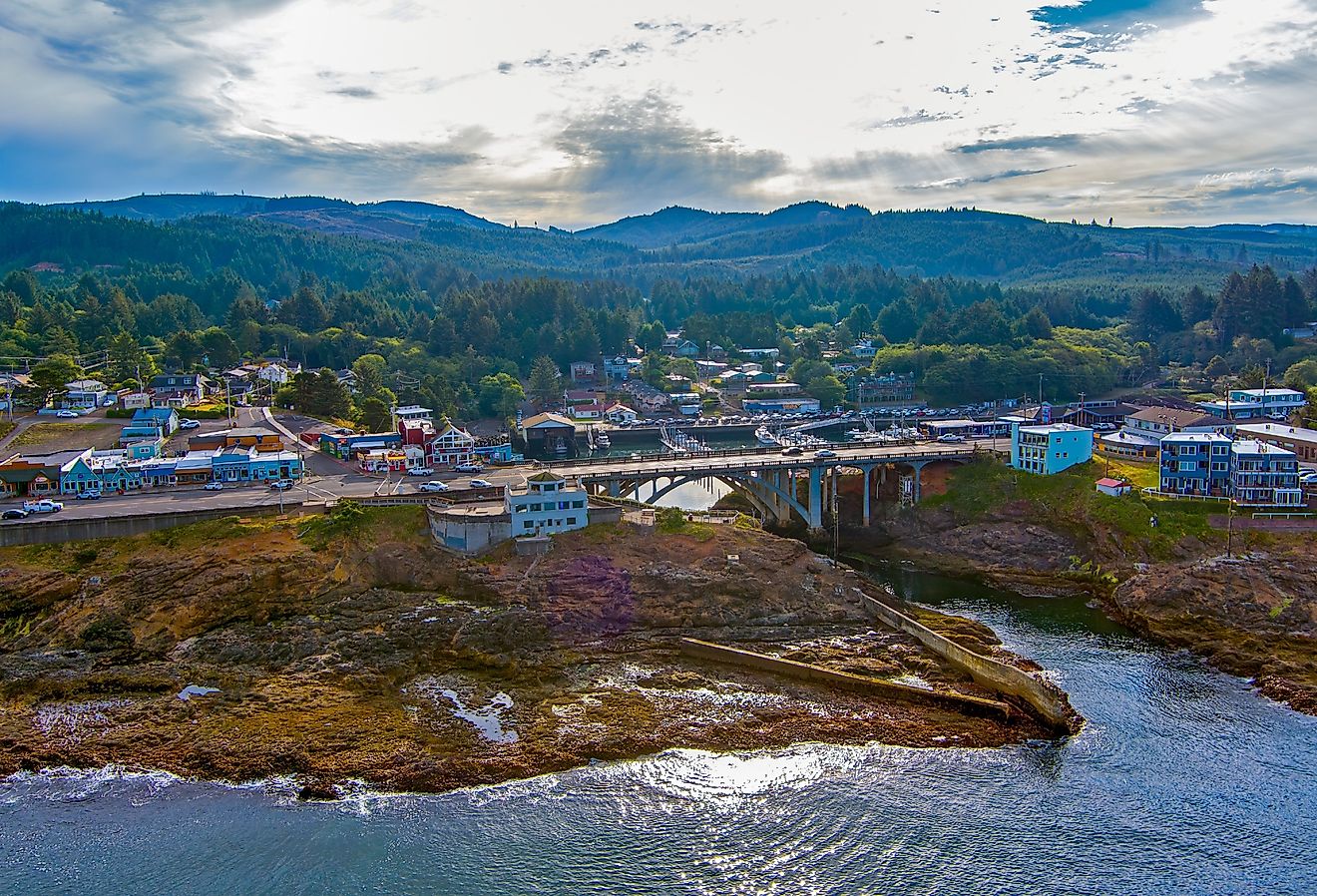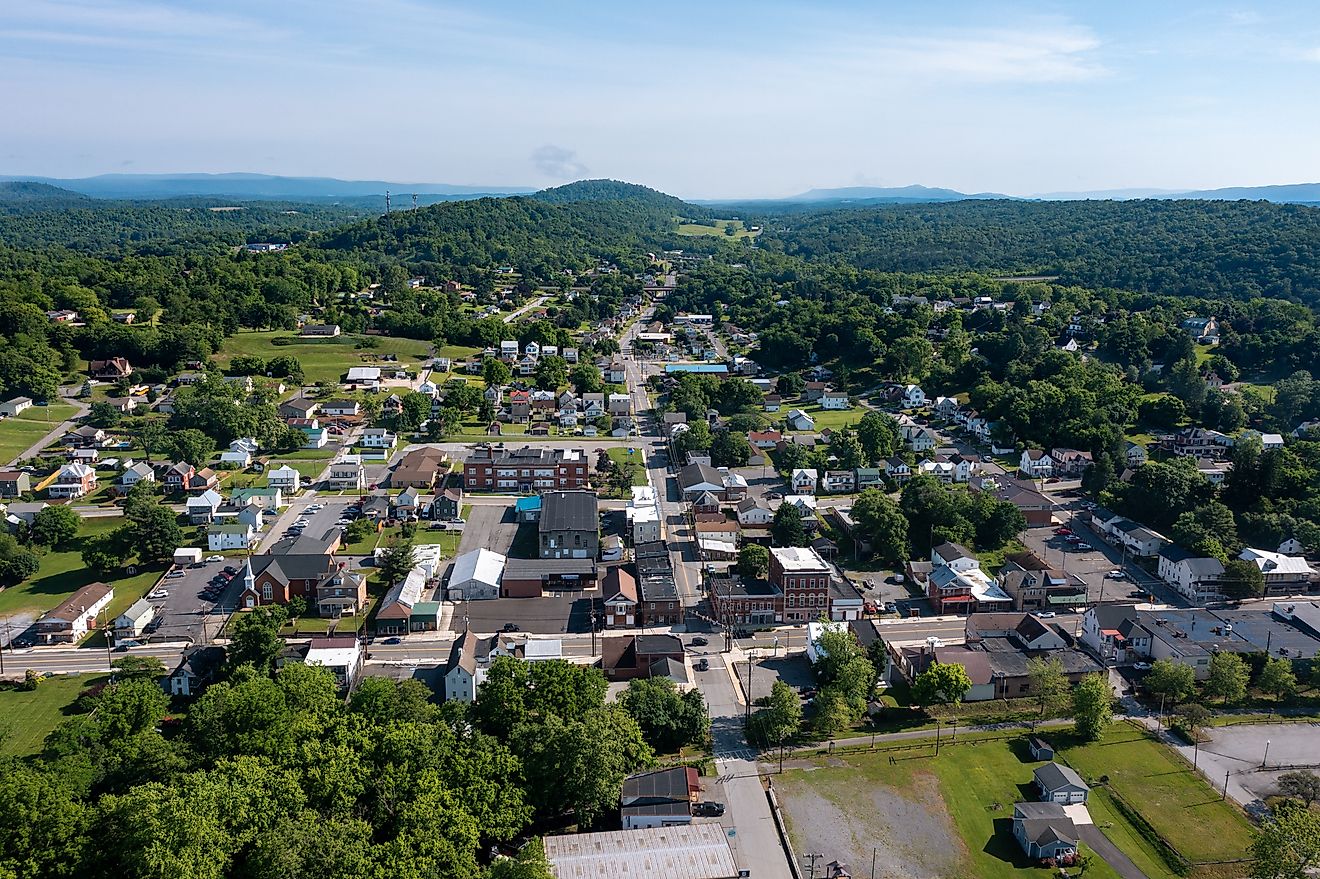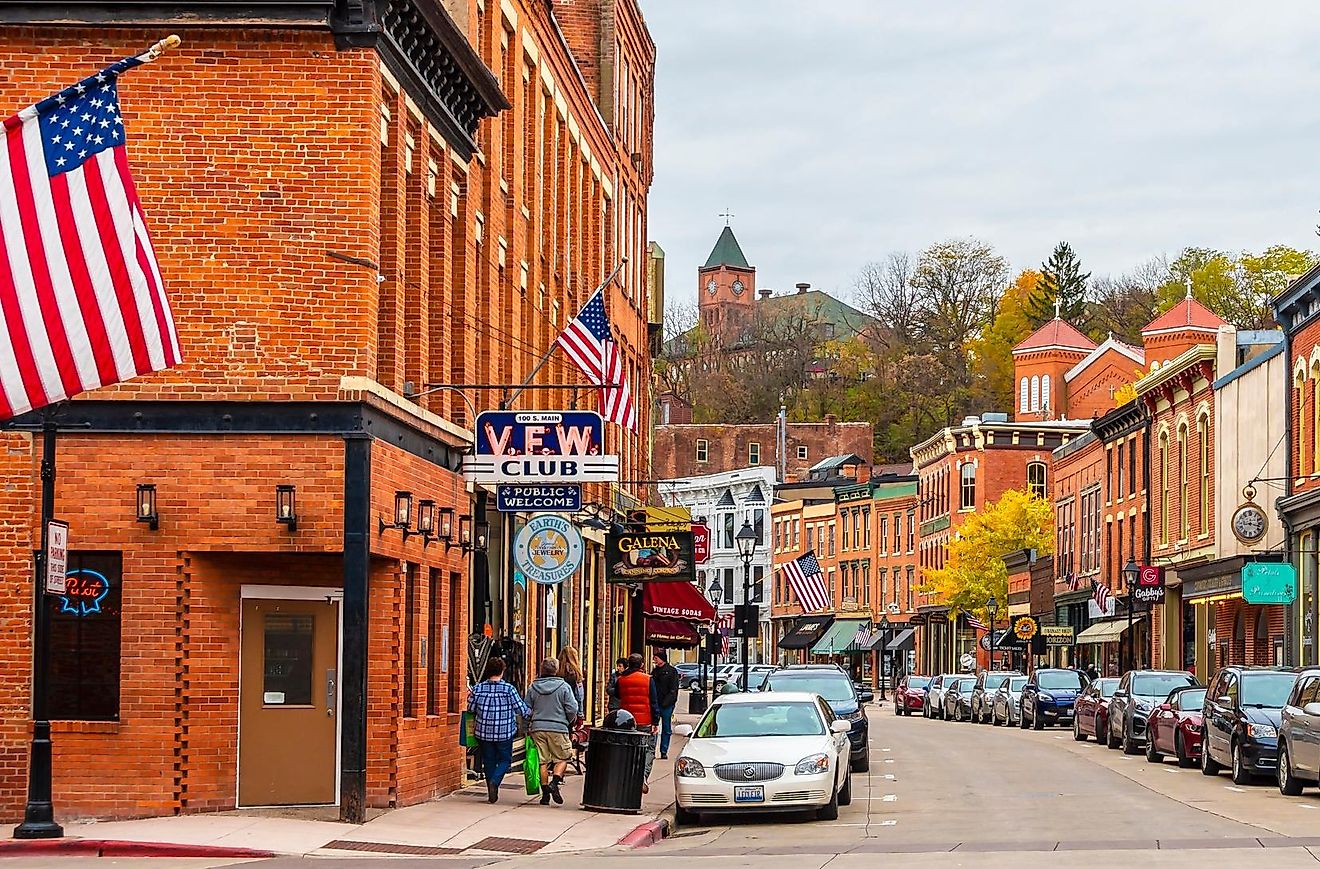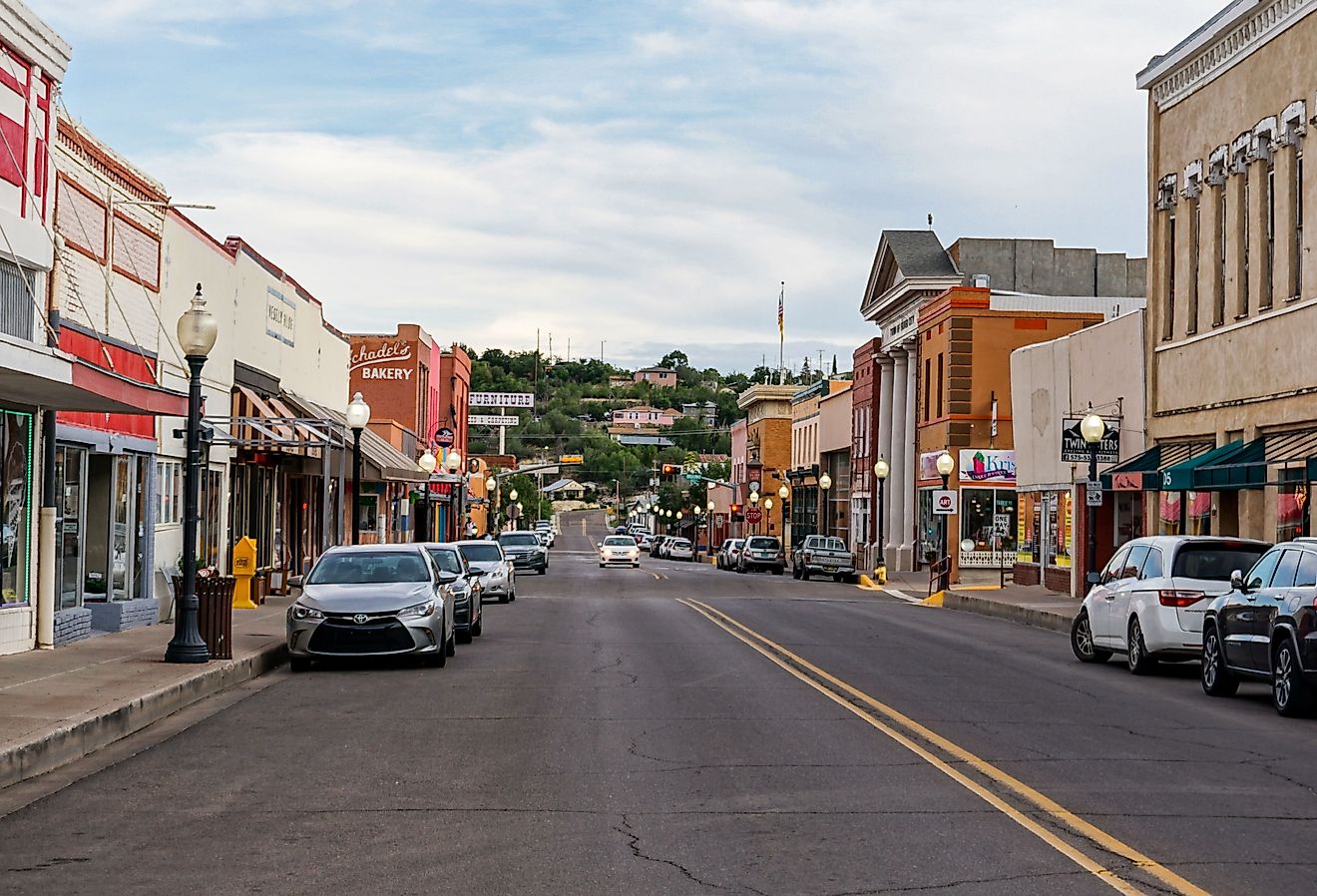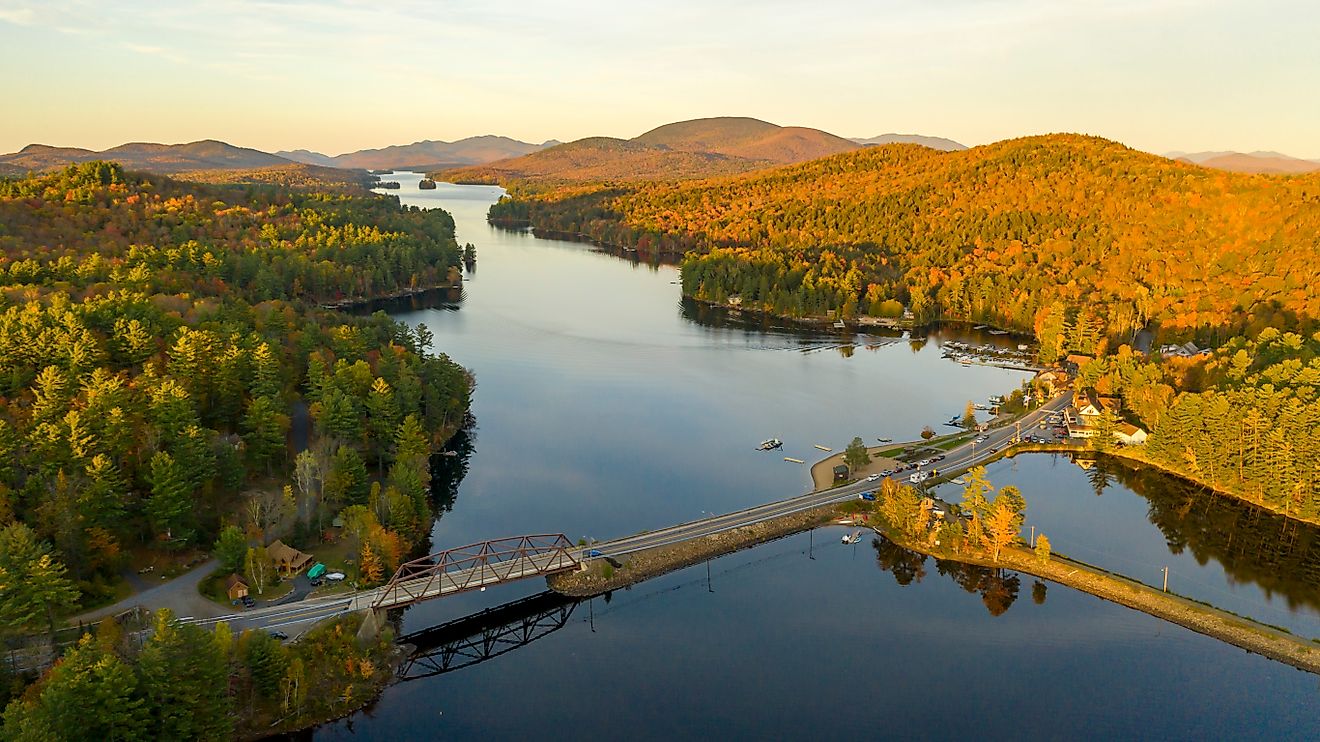
10 Most Scenic Small Towns In The United States For Nature Lovers
The United States is one of the most geologically diverse countries on the planet. From the swamps of the Deep South and the deserts of the Southwest to the northern arctic tundra of Alaska, whatever landscape you wish to explore can become a reality without ever crossing the border.
If you are planning your next trip and need some ideas for where to go to maximize the awe-inspiring natural scenery you'll encounter, take a look below at some of our top recommendations from across the nation.
Talkeetna, Alaska
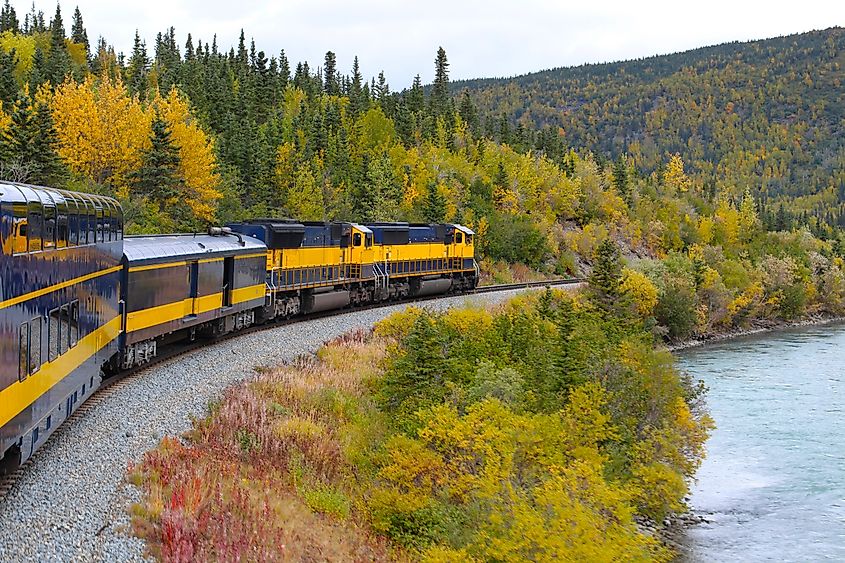
Located at the confluence of three rivers (the Talkeetna, Susitna, and Chulitna) and framed by the Alaska Range, the community of Talkeetna draws outdoor enthusiasts seeking a raw and immersive natural setting in what is arguably America's wildest state. This small town mainly serves as a base for those looking to enter Denali National Park, which looms in the distance and dominates the skyline on clear days. Here, scenic flight tours are a unique yet popular way to get around, offering close aerial views of glaciers, vast forests, snowfields, and more.
The town’s location also makes it ideal for wildlife watching and hunting, where moose, bald eagles, and even bears are not uncommon sightings. Nearby hiking options include the short but rewarding Talkeetna Lakes Trail, which loops through spruce forest and along the water. In summer, rafting and fishing on the Susitna River are popular too, while winter brings cross-country skiing, snowshoeing, and even dog sledding opportunities!
Despite its remote setting, the historic downtown core houses several restaurants and accommodations, many housed in century-old buildings, along with other attractions like the Talkeetna Historical Society. Downtown Talkeetna is also the location of Denali Brewpub, a great place to kick back after a long day outdoors.
Sedona, Arizona
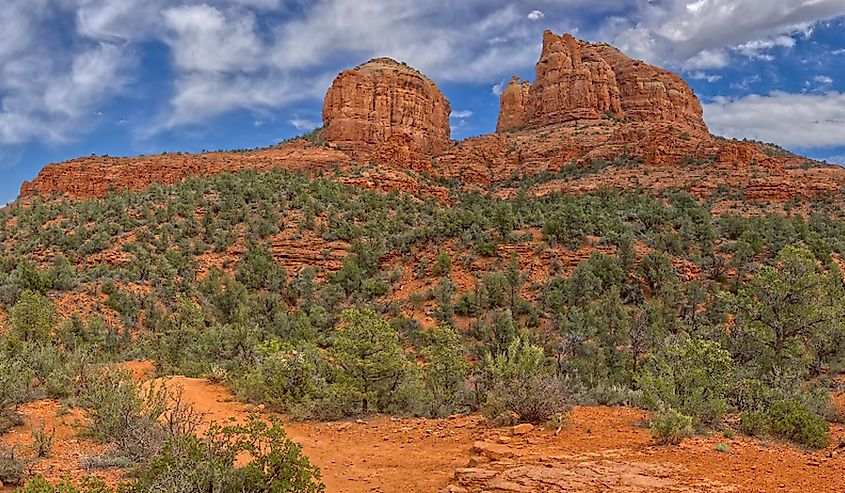
Sedona sits in central Arizona’s high desert, a starkly different environment from Alaska; one that is surrounded by expanses of red rock formations that have long attracted hikers, photographers, and geologists. Here, you will find immediate access to hundreds of trails, many of which weave through canyons, mesas, and sandstone cliffs.
Cathedral Rock and Bell Rock are among the most photographed sites, each accessible via moderate hikes that reward you with unbeatable panoramic views of the region. Oak Creek is another notable natural feature that runs through the area, supporting lush vegetation that contrasts sharply with the arid terrain around it. One more suggestion is Slide Rock State Park, which is located just north of town. This preserve provides a natural water slide outside of the winter months, making it a perfect place to cool off during a hot summer day.
For those seeking elevation, the Airport Mesa trail is a must-visit. Its broad views over the Verde Valley are absolutely spectacular at sunset.
In addition to its natural features, Sedona is known for its dark skies, which provide excellent stargazing conditions thanks to minimal light pollution. Whether exploring on foot, bike, or off-road vehicle, day or night, the landscape around Sedona delivers an eye-catching experience that exemplifies the American Southwest.
Terlingua, Texas

Near the Mexican border, Terlingua epitomizes West Texas in just about every way. It is located just outside Big Bend National Park and two hours from the lesser-known Big Bend Ranch State Park, two of the Lone Star State's biggest protected wildlands.
This former mercury mining town has become a waypoint for travelers seeking open sky and silence, interrupted only by the occasional tumbleweed rolling by. The terrain around Terlingua is unforgiving and unspoiled, and while hiking is a popular method of seeing it up close, you should come prepared with lots of water and sun protection.
Day hikes into Santa Elena Canyon or along the Lost Mine Trail reveal limestone cliffs, desert springs, and layers of exposed rock shaped by tectonic shifts and ancient seas. River trips down the Rio Grande, especially through the multi-day Lower Canyons route, give you another way to explore the region and provide a unique look at the border’s natural form.
At night, the sky in Terlingua is among the darkest in North America, making it a hot spot for astronomers, even those without telescopes. In fact, both nearby parks mentioned above have been designated as International Dark Sky Parks, largely due to the near-complete lack of human development anywhere nearby.
Ely, Minnesota
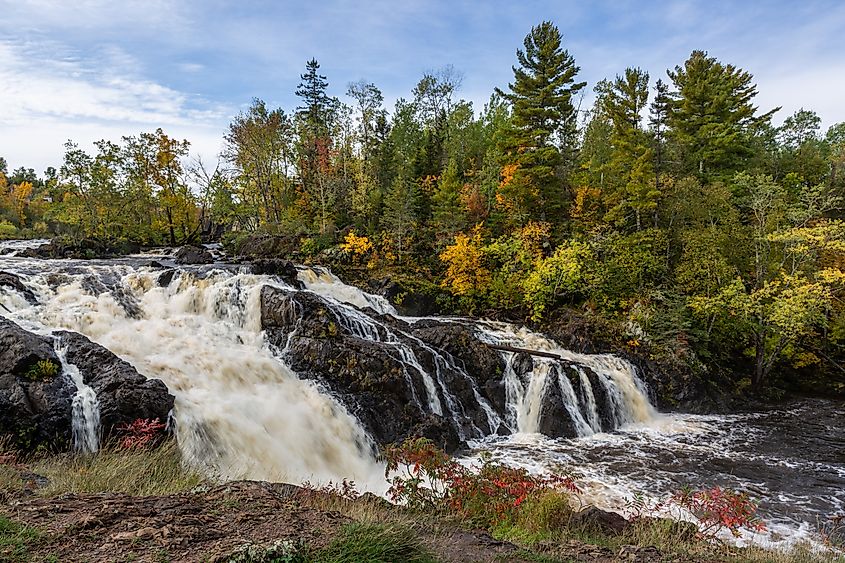
Situated at the edge of the Boundary Waters Canoe Area Wilderness, Ely offers a gateway to one of the most pristine and protected natural regions in the continental U.S. The town is surrounded by countless interconnected lakes, dense pine forests, and ancient bedrock landscapes, all shaped by ancient glacial activity.
Canoeing is the primary mode of travel within the wilderness, and Ely provides the necessary outfitters and guidance for extended paddling trips, both solo and guided. During your outing, you may encounter a range of northern wildlife, including timber wolves, black bears, and loons. Learn more about some of these creatures at the nearby International Wolf Center and the North American Bear Center, each offering educational exhibits grounded in real, local field research.
Those who prefer to travel on foot tend to explore sections of the Kekekabic and Bass Lake trails, where elevation changes and rock outcrops lead to scenic outlooks and secluded shorelines. In winter, the region shifts toward snowshoeing, Nordic skiing, and dogsledding instead, with trails in this remote area remaining largely uncorrupted throughout the season.
Escalante, Utah

Set along Scenic Byway 12 in southern Utah, Escalante is in close proximity to one of the most geologically fascinating and visually complex regions in the West. The community itself is used by many as a launching point for exploring Grand Staircase-Escalante National Monument, a vast landscape of canyons, desert expanses, and natural arches carved over millennia from layers of sandstone.
Photographers are drawn to the region’s shifting light and vividly striated rock formations, while birdwatchers and amateur botanists will find diverse species thriving in microclimates hidden between the region's varying plateaus.
Recommended trails, like the one into Lower Calf Creek Falls, lead through desert scrub into shaded oases, culminating at a 126-foot waterfall pouring into a cold pool below. Canyon routes, such as those into Peek-a-Boo and Spooky Gulch, offer narrow passageways through twisting canyon walls, ideal for adventurous hikers willing to navigate tight turns and dry washes.
In town, you can learn more about the area's human/natural histories and get the inside scoop on local goings on at locales like the Escalante Interagency Visitor Center and the Escalante Heritage Center. Escalante Petrified Forest State Park, which is located a stone's throw away at the northwestern tip of downtown, is also worth a stop, particularly if you're interested in dinosaur and ancient botany, as it hosts a collection of fossils and petrified wood.
Forks, Washington

Deep in the dense temperate rainforests of the Olympic Peninsula (home of Olympic National Park), Forks is an iconic Pacific Northwest destination featuring almost everything the region is known for. Sitting between the moss-laden Hoh Rain Forest to the east and the rugged Pacific coast to its west, the town showcases a convergence of forest, river, and sea within a short drive, with tons of annual rainfall, of course.
Be sure to venture down the Hoh River Trail leads well into majestic old-growth forest, where Sitka spruce and western hemlock tower above a floor blanketed in ferns and hanging moss. Also check out Sol Duc Falls, a scenic cascade also accessible via a short hike.

More coastal-focused hikes near Rialto and Second Beach reveal sea stacks, tide pools, and vast expanses of driftwood-strewn shorelines, often shrouded in a fog that adds to the area’s misty and relaxing atmosphere.
As mentioned, Forks receives extremely high annual rainfall, with an astounding average of over 10 feet yearly! With all this water, it is no wonder that the area is also saturated with streams and rivers, many of which are home to annual salmon runs, drawing in both anglers and naturalists looking to get a peek at this natural phenomenon.
Bar Harbor, Maine
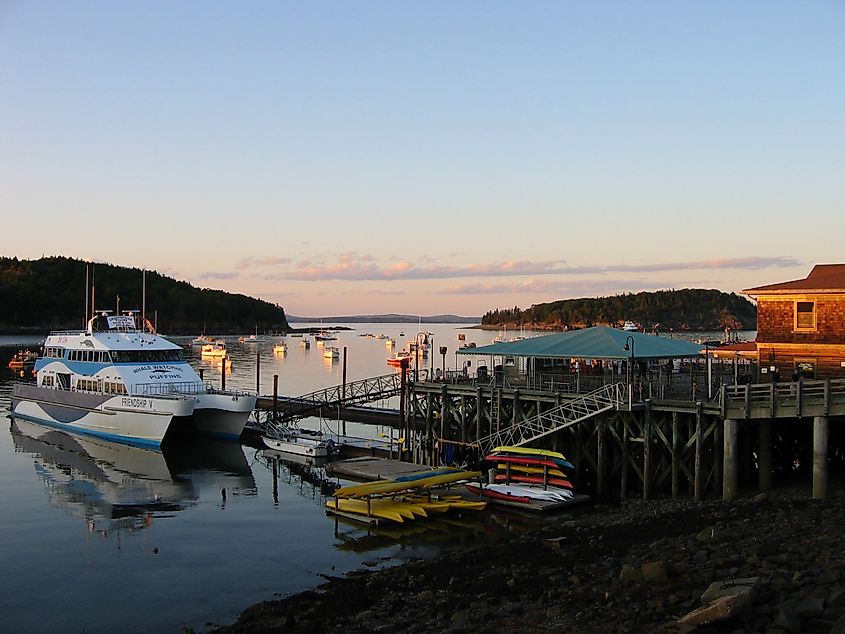
At sunrise, crowds gather atop Cadillac Mountain to watch the first light touch the United States, an experience that draws nature lovers to Bar Harbor year after year. Located on Mount Desert Island, the town is embedded in the landscape of Acadia National Park, where granite peaks drop into the Atlantic, and rocky beaches teem with marine life.
Within the national park, car-free carriage roads originally funded by John D. Rockefeller Jr. wind through forests and past stone bridges, also drawing cyclists, runners, and horseback riders in warmer months. The Ocean Path, one of the park’s most accessible trails, hugs the coastline with views of the surf, various offshore islands, and imposing oceanside cliffs.
Wherever you are, Acadia National Park is lauded for its autumn scenery. Its otherwise green woodlands shift towards deep hues of red, orange, and yellow, which pop against the white and gray mountains they blanket. The town itself is a splendid enough attraction too, housing seaside resorts, a historic downtown core, several world-class seafood restaurants, and the George B. Dorr Museum of Natural History, an awesome spot for natural history fans.
Crested Butte, Colorado
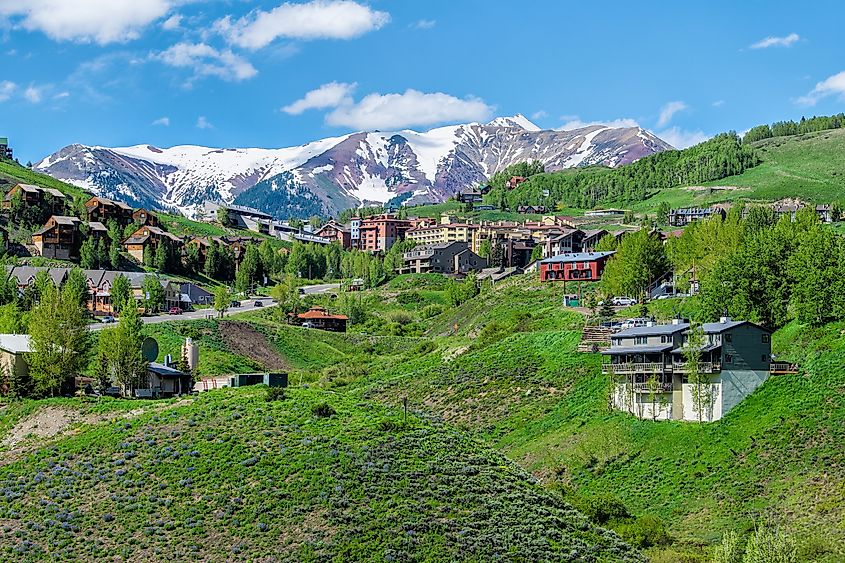
Every summer, alpine meadows around Crested Butte erupt in a rainbow of color as wildflowers cover the slopes, an event so striking that the town hosts an entire festival to mark it each July. At nearly 9,000 feet, this former mining outpost now functions as a high-altitude base for hiking, mountain biking, and backcountry/resort skiing, depending on the season.
The surrounding Elk Mountains contain a network of trails that climb through aspen groves, traverse high ridgelines, and drop into glacier-carved basins. The Snodgrass Mountain trail gives wide views over Crested Butte and some of the expansive wildflower fields talked about earlier, while the more remote West Maroon Pass links to the famous town of Aspen, should you wish to embark on a multi-day expedition through the trail's rugged terrain over the Maroon Bells.
In autumn, the aspen trees turn gold in unison across local hillsides, then winter transforms the area into a quiet expanse of snowfields and groomed Nordic trails, with the Crested Butte Nordic Center offering over 50 kilometers of well-groomed routes.
Lake Placid, New York
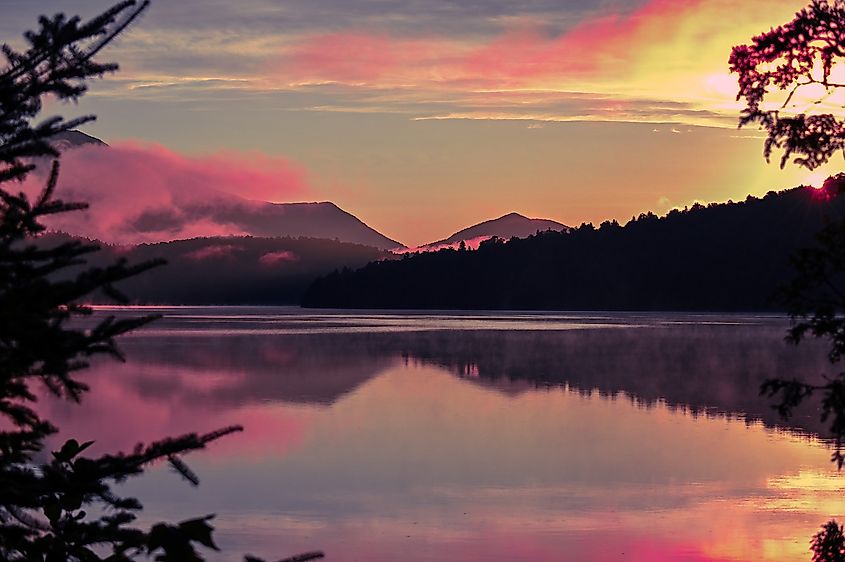
Best known for its Olympic legacy, Lake Placid sits at the heart of the Adirondack High Peaks region, arguably the most beautiful part of upstate New York. The town is flanked by forest-draped hillside and 46 mountain summits exceeding 4,000 feet, making it a year-round destination for serious hikers and skiers/snowboarders alike.
The Adirondack Loj trailhead offers access to multiple of these lofty East Coast peaks, including Mount Marcy, the state’s highest point. Meanwhile, those looking to stay at lower elevations can kayak across the local Mirror Lake or explore the flat trails circling East Lake.
Hosting two winter Olympics, 1932 and 1980, a collection of ski hills and cross-country ski trails can still be found nearby for the public's pleasure. Perhaps the most famous downhill area in New York, Whiteface Mountain Ski Resort rests a short drive north of town, with many enjoying its runs during the day, opting to stay the night at any one of Lake Placid's hotels. While in town, you also must check out some of the Olympic infrastructure that is still hanging around, which allows visitors to skate on outdoor rinks or even try a bobsled run!
Crystal River, Florida

Crystal River is one of the few places in the United States where you can legally swim alongside wild manatees. The town sits within the boundaries of the Crystal River National Wildlife Refuge, which protects key habitat for these threatened marine mammals. Its warm waters attract hundreds of manatees each winter as they seek refuge from the colder Gulf waters.
Three Sisters Springs, a clear and accessible section of the refuge, draws snorkelers, kayakers, and photographers interested in observing the animals in its calm, shallow water. Understand that during crowded months, the springs are regulated to ensure both wildlife protection and responsible tourism.
Beyond manatee season, the surrounding region offers other ways to go hiking and paddling through coastal marshlands, with trails in the nearby Withlacoochee State Forest and paddle routes along the Chassahowitzka River. There is also the Crystal River Archaeological State Park, an interesting locale in which remnants of Florida's earliest human settlements have been located and studied, now open for the public to view.
Just a short drive away on the Gulf Coastline here, you'll run mainly into stretches of heavily vegetated marshes, with the exception of Fort Island Beach, a local favorite and one of the only sandy beaches in the area.
Appreciate America's Diverse Landscapes in These Towns
From desert canyons to boreal forests, each place on this list offers amazing views with a plethora of fun and interesting activities to accompany them. These towns not only provide a place to rest your head for the night or fuel up for the road trip ahead, but they also tend to blend seamlessly with the lands they sit in. Whether it is through their museums, restaurants, historic sites, or other unique landmarks flavored by local people/culture, you can be assured that each of these destinations plays a key part in any adventure out into America's pristine wildlands.

